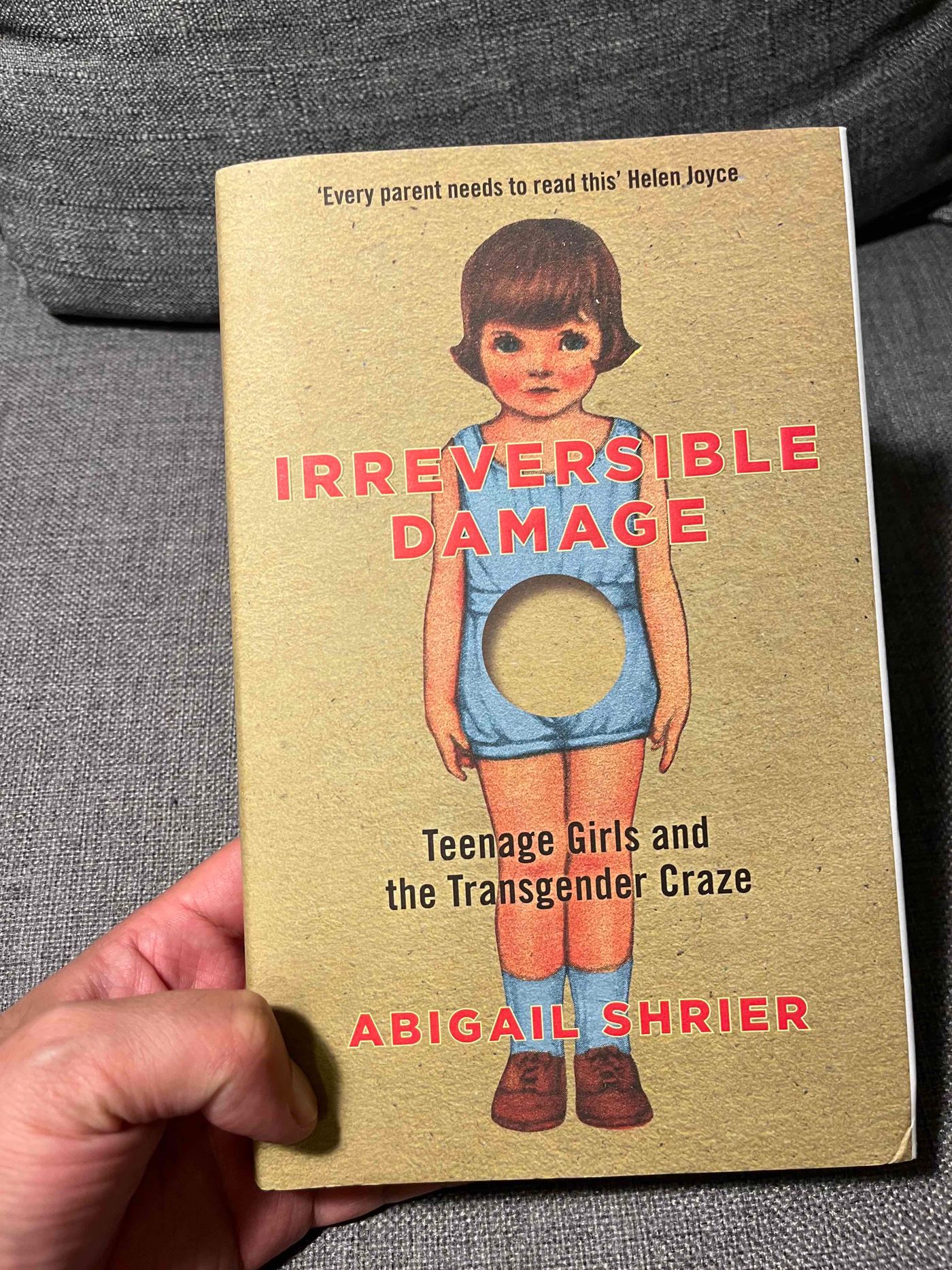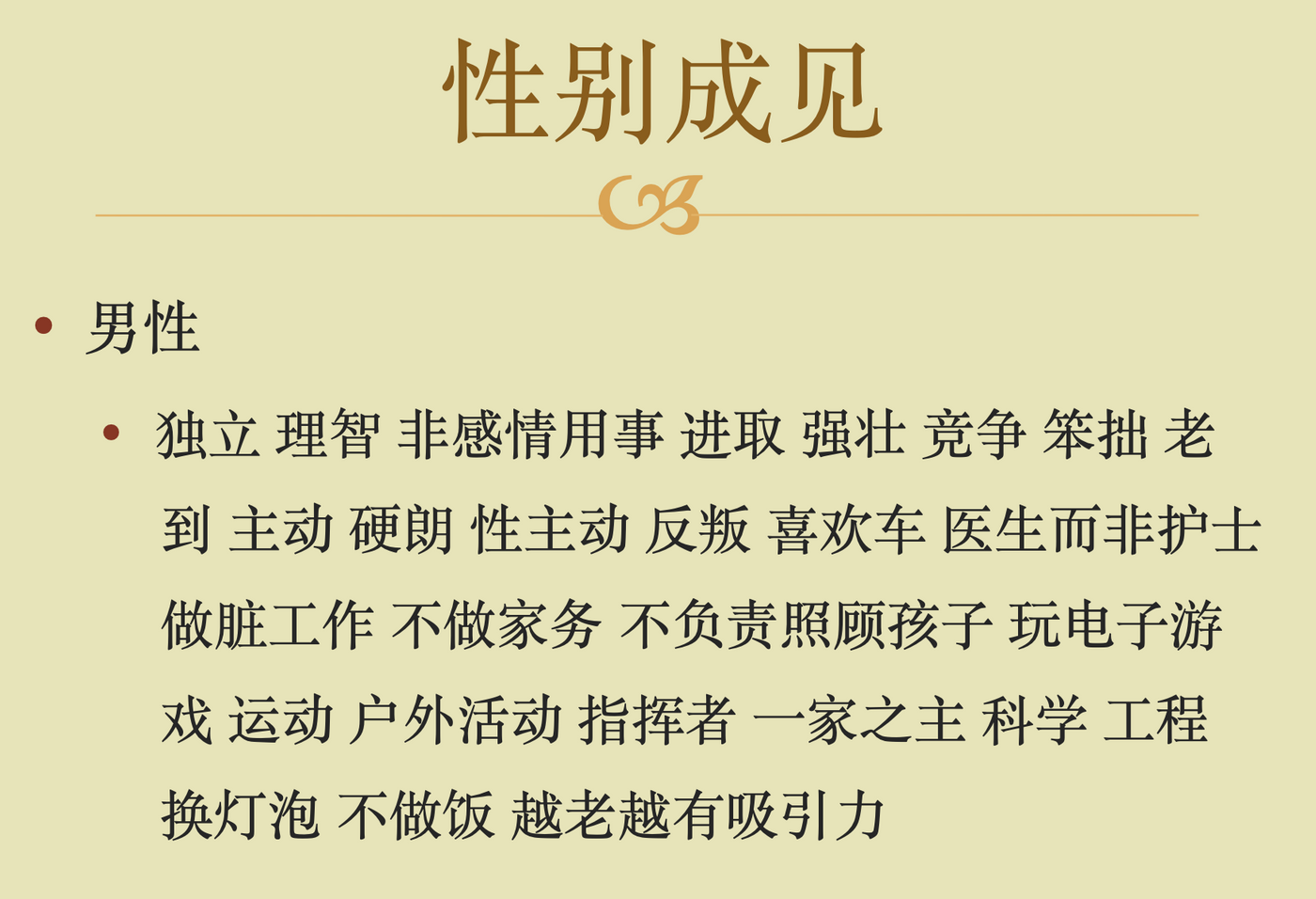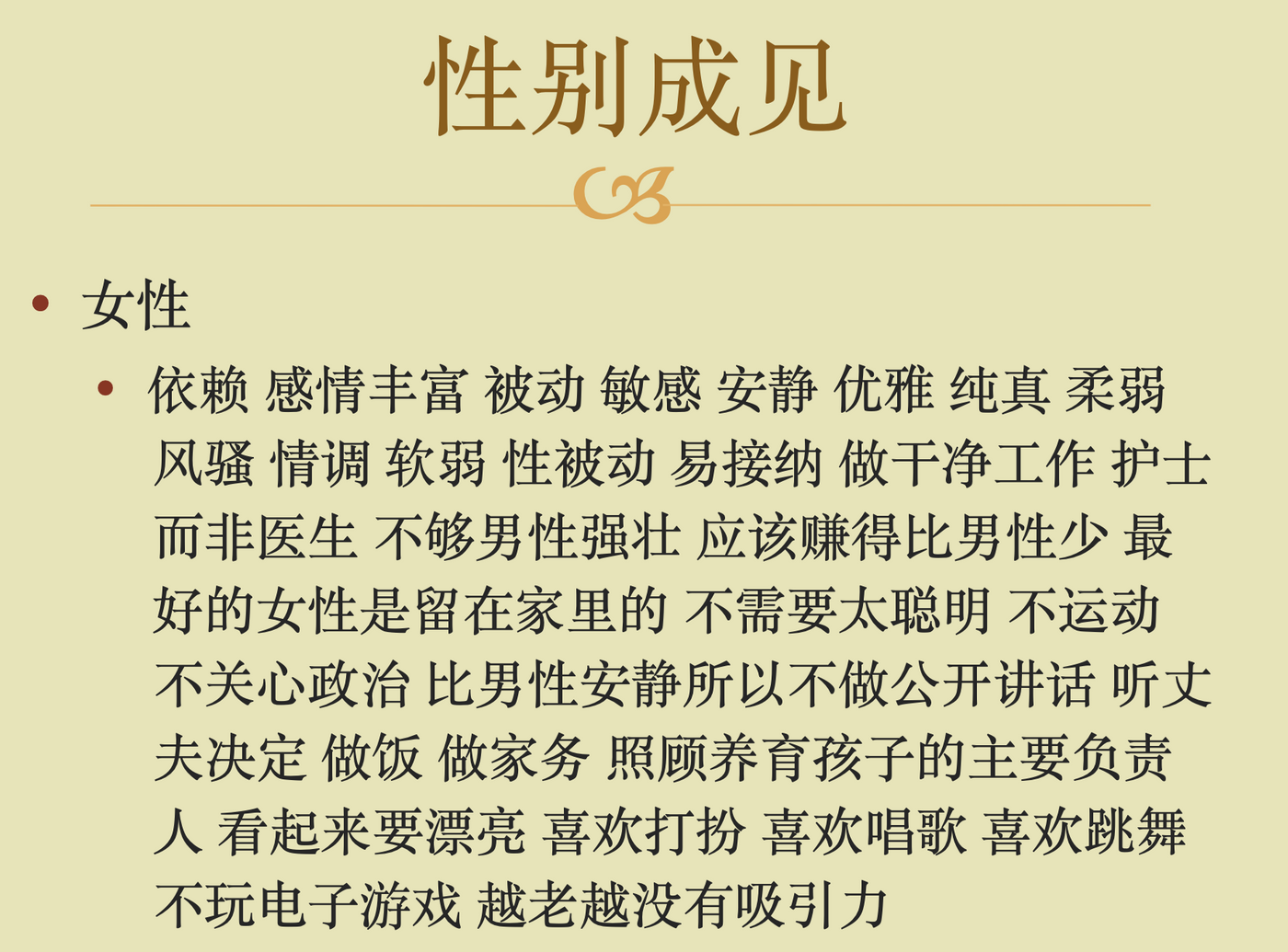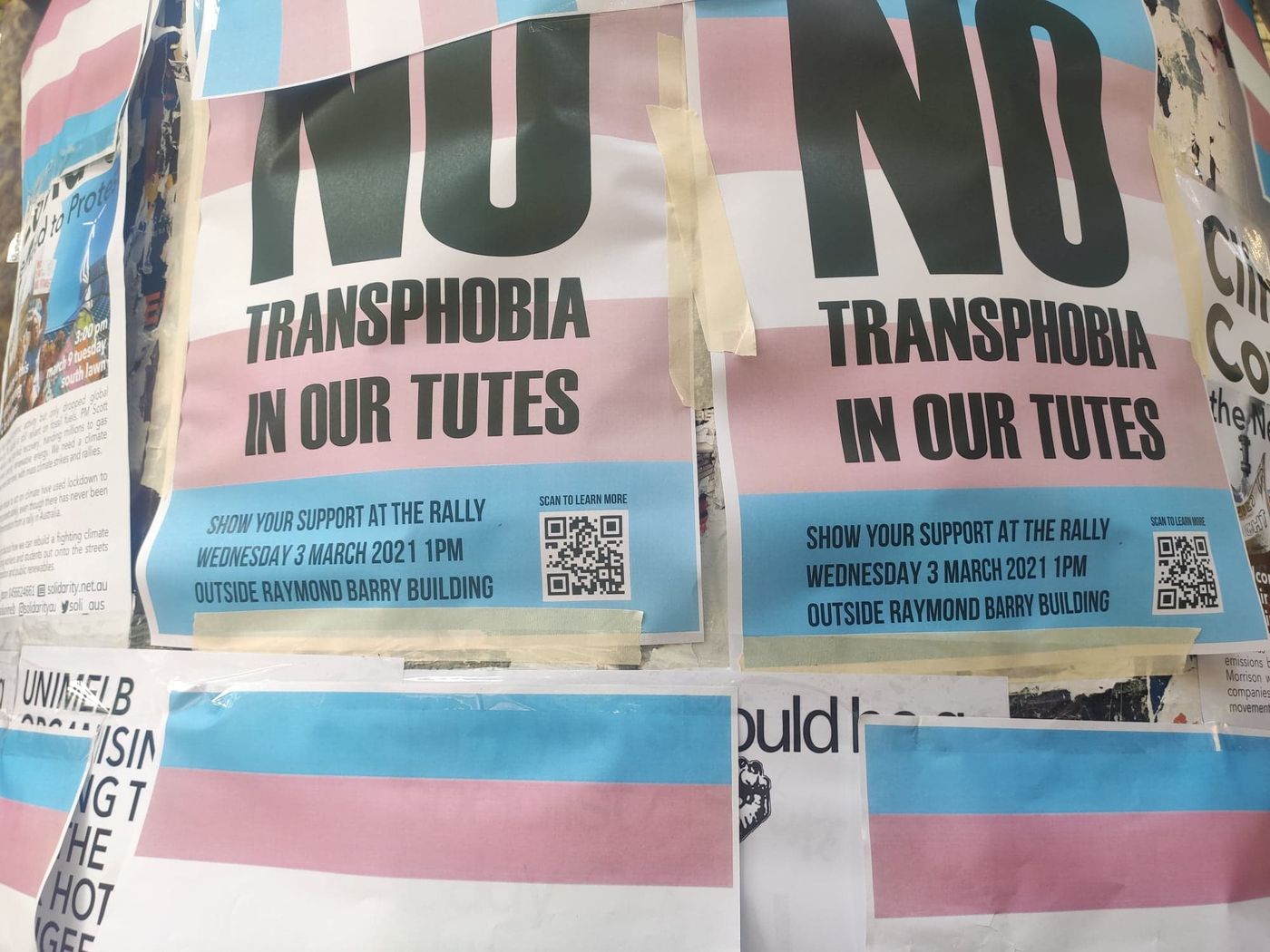What to read|Irreversible Damage

Before introducing this book that has caused countless controversies, let me first talk about some ideas about women's rights.
In the past, when I taught classes on women’s rights, I would first list a series of gender stereotypes, from appearance to personality to social division of labor and so on.


Then, students will be asked how many characteristics they think women or men must have, and why. This is more a matter of personal belief than I think it's an effective and interesting introduction. I believe that these stereotypes, from appearance to personality to social division of labor, are gender norms that we have imposed on people. The so-called social gender gender is just a series of these norms. Women have such-and-such appearance, personality, social division of labor, etc., which means that women should have such-and-such appearance, personality, social division of labor, etc. Therefore, I believe that the so-called "inevitability" of gender norms should be broken, and even social gender itself should be eliminated as much as possible. So I believe:
1. Gender and gender norms are requirements imposed on women.
2. Most of these demands are unreasonable and should be eliminated.
I also believe that an important reason for women’s historical oppression is inseparable from women’s biological sex, including a series of stigmatized biological abilities, such as pregnancy and menstruation. Many gender norms are tied to these biological sex characteristics. So I believe:
3. Without biological sex, we cannot explain the gender oppression of women.
4. (So) biological sex exists.
In addition, I also doubt the existence of the so-called innate, innate personality or character, etc. In my opinion, even if our minds are not completely blank when we are born, these complex contents are more acquired, perhaps continue to deepen, perhaps continue to change. Moreover, the idea of being born with an inner self-identity that inherently corresponds to social gender and gender norms seems very dubious to me. So I also believe:
5. Gender identity as an innate self-identity is highly questionable.
Furthermore, through reading, I believe that the pain of gender nonconformity/gender dysphoria is real and exists in some people. People with severe gender dysphoria will feel severely insecure about their gender body and feel very painful about this body having this gender. Some people who have suffered severe gender dysphoria will choose transition/transgender. Some people will choose social transition and just live with another gender (new name, new title, etc.); some people will choose drugs. Medical transition is the use of drugs and hormones to live in another gender; some people choose surgical transition, which is to live in another gender through gender reassignment surgery. As adults experiencing severe pain, these are quite normal and even necessary. As members of society, they should receive support and help from society. So I also believe:
6. Transgender people need a range of necessary supports from society; their rights should not be affected.
I came out on this issue. Because of holding the above beliefs, especially 3, 4, and 5, people are often accused of being transphobic in current discussions, that is, discriminating against, resisting, or hating transgender people. If you call yourself a feminist (because you believe in 1, 2, and 3), you will be called a TERF (Trans Exclusive Radical Feminist), a radical feminist who excludes transgender people. Those who hold these beliefs usually call themselves gender-critical feminists. Maybe I'm one of them?
Articles I’ve written: Gender, bodies, trans: Who counts as a woman?

After I came out as gay, everyone knew that I was a bit terfy, and they also introduced me to this book: " Irreversible Damage ". The question that the author Abigail Shrier wants to ask in the book is that in the past decade or so, the proportion of adolescent girls declaring transgender has greatly increased. Why?
Of course, this may be nothing more than a pseudo-question. Shrier gave some data. In previous studies on gender dysphoria, the vast majority of patients were adolescent boys, and they showed symptoms very early. However, in the past decade or so, the proportion of adolescent girls suffering from gender dysphoria has greatly increased, becoming the majority of patients. Most of these girls do not show symptoms of gender dysphoria when they are younger, and then they quickly choose to be transgender. To borrow the words of Dr. Lisa Littman, this atypical gender dysphoria is called rapid-onset gender dysphoria “ROGD,” let’s call it acute gender dysphoria, and acute gender dysphoria is mainly spread through social interaction and peer pressure.
Such statements and questions are full of controversy. If gender dysphoria can be "contagious," that means that at least acute gender dysphoria, and therefore further transsexuality, is not actually due to the so-called inner gender identity. This is certainly controversial. As for whether you should believe it or not, I’ll leave it to you to give your own answer after reading it.
At the very least, Irreversible Damage is a very readable book. Shrier's writing is smooth and humorous. Although there are a few places where her irony seems a bit excessive, overall her writing is entertaining and she tries to remain as objective as possible, but that's certainly part of the controversy.
In the book, after introducing what she believes is the phenomenon of transgender public opinion among adolescent girls, Shrier shows us the results of her interviews and research. By interviewing a series of adolescent girls, their parents, influencers who spread transgender information on social networks, school administrators and teachers, psychologists, opponents, and transgender women who regret or do not regret it, Shrier attempts to dig deeper. A controversial yet taboo topic.
In the book, Shrier sometimes describes the situation of adolescent girls when she was growing up. Sometimes these descriptions make people feel that she seems to hold a certain stereotype of girls: pink, innocent, silly, beauty-loving, etc. wait wait wait. When she finally gives suggestions for solving this so-called problem, we can also see that she has some special views on gender issues, and these views are not acceptable to all feminists. However, this is not necessarily enough to deny that this book is worth reading.
If you are a girl, and you don’t like pink, don’t like skirts, and don’t like dressing up; and at the same time, you like girls, is this enough to show that you are actually a boy at heart? Isn’t this homophobia against lesbianism?
I'll leave it to everyone to decide if I deserve to be canceled for raising this issue.
Like my work? Don't forget to support and clap, let me know that you are with me on the road of creation. Keep this enthusiasm together!
